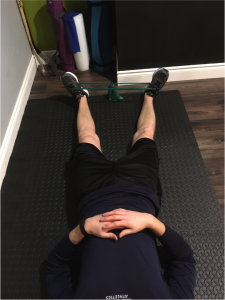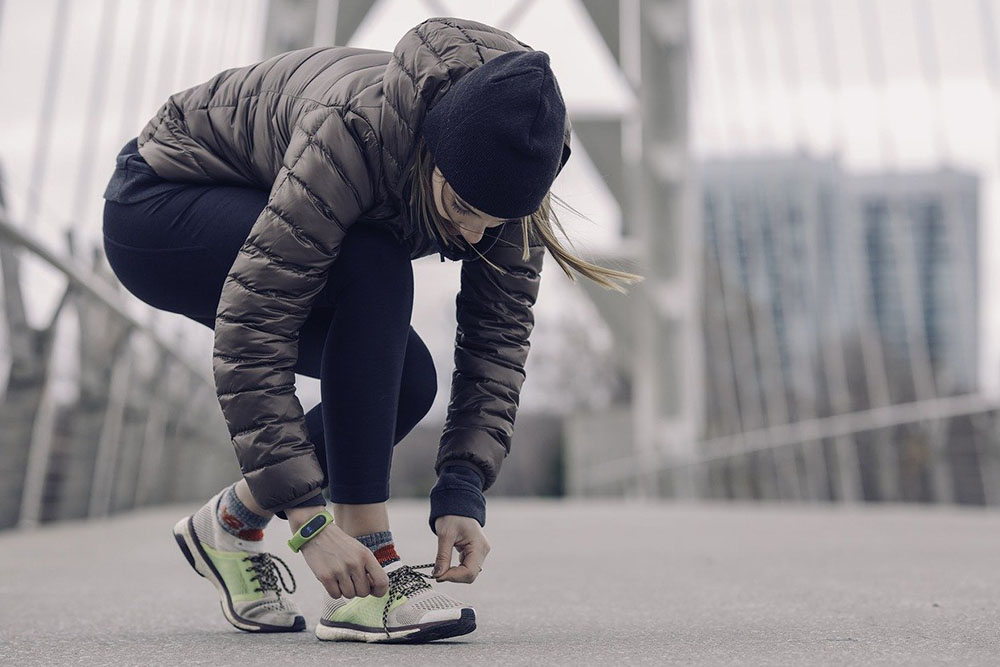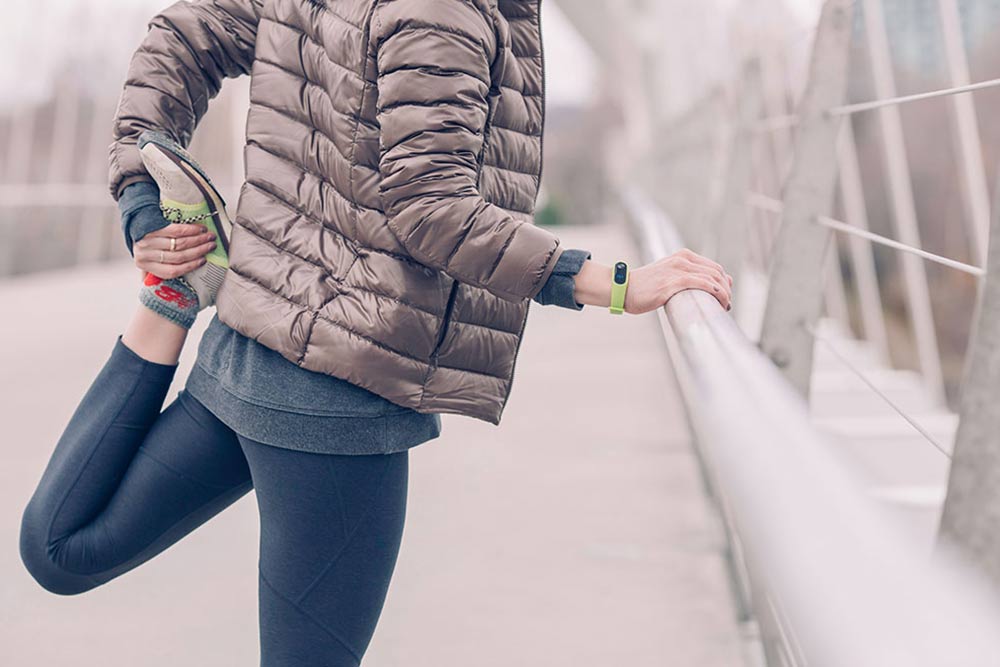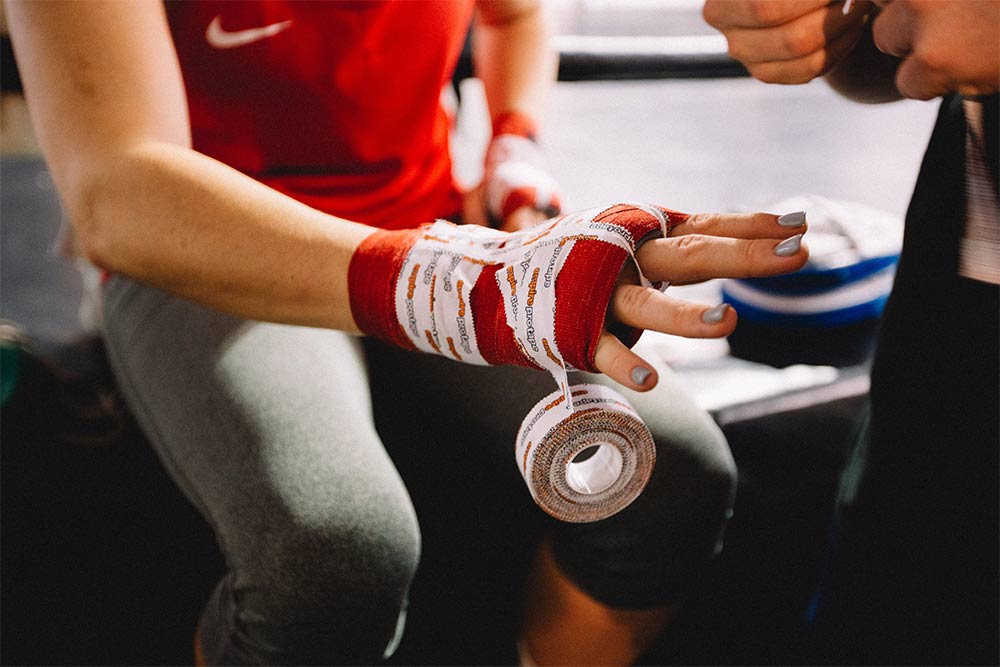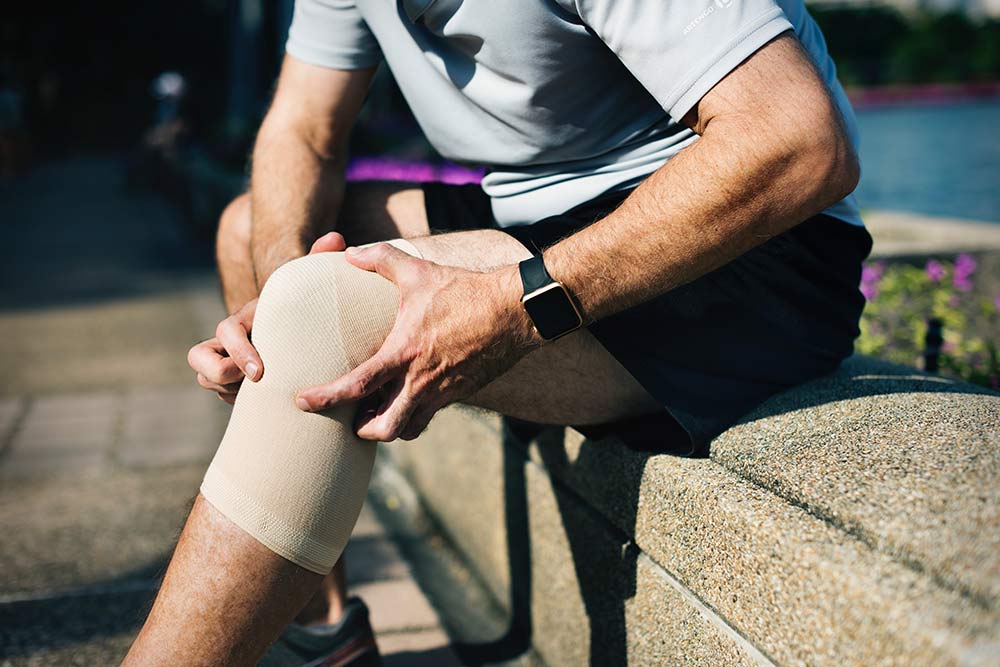5 Ways to Get Rid of Shin Splints

Ryan Cross, Physiotherapist
Pain related to “shin splints” is one of the most common ailments that athletes will complain about. Most runners have had a run-in with the dreaded shin splints at one time or another. Shin splints can be easily identified, but getting rid of the pain can be more difficult. The challenge lies in identifying the cause and matching the treatment accordingly. Understanding the causes and risk factors can help you get rid of shin splints once and for all.
What Are Shin Splints?
“Shin splints” is a term given to any pain located around the shin. It is most commonly located in the lower, inside part of the leg. Medial Tibial Stress Syndrome is another term given to this type of pain due to the location of pain. Typically, pain occurs as a result of overuse or repetitive microtrauma. That is why you will see this injury happen early in the season or when training gets ramped up. Some factors that contribute to the onset of shin splints include lower extremity muscle imbalances, training errors, increased body mass index (BMI), poor shock absorption, or malalignment issues in the foot or leg. Most often the pain is related to muscles that are located in the area and attach to the bone; in severe cases, it can lead to stress fractures. Seeing a doctor or physical therapist can help rule out a more serious injury.
How do you get rid of the pain?
To get rid of the pain related to shin splints it is important to identify which factors might be contributing to the pain in the first place. Most of the time these factors can be addressed and the pain will improve. The five ways to get rid of shin splints are:
-
Weight Control
The more weight that is loaded on the leg will increase the forces on the shin with every impact of the foot during running and walking. Maintaining a healthy weight can place less force on the shin and alleviate pain. Increased BMI has been shown to be a risk factor for the onset of shin splints. Although increased BMI is not always the best indicator of body fat or healthy weight, it can lead to more force on the shin. If you have a higher BMI, you can still avoid shin splint pain by managing your training schedule and progressing over a longer period of time. Our bodies are very adaptable and during training, some athletes may need a longer adjustment period to get used to the increased load or longer run.
Related Article: Strength Training Program for Endurance Runners
-
Ankle Strength and Flexibility
Poor ankle flexibility and strength can contribute to the onset of shin splints. Addressing these issues can help you get rid of the pain. Excessive ankle plantar flexion has been shown to be a risk factor for people with shin splints. To address this, it is important to maintain adequate dorsiflexion flexibility with calf stretching. Improving dorsiflexion strength is another way to control motion at the ankle. Try these exercises to maintain proper ankle strength and flexibility.
- Calf Stretch: Place your foot up against the wall with your toes up, keeping the knee straight. Move the knee toward the wall to feel a stretch in the calf. Do the same with the knee bent. Hold each stretch for 30 seconds, 3 times.
- Lift the foot up with and hold for 5 seconds, slowly lower the foot as far as comfortable over 10 seconds. Repeat 15 times
-
Shock Absorption:
With each stride and landing during running, the body needs to absorb the force of foot strike. Pronation is a combined movement of the foot and arch to help absorb the shock on each step. The foot and ankle move into a position of dorsiflexion, eversion, and abduction to allow for a softer landing. Both excessive pronation and lack of pronation can lead to poor shock absorption. A sign of excessive pronation is flat feet or dropped navicular, usually caused by hypermobility or weakness in the muscles that support the arch. A high arch in the foot usually means there is rigidity in the joints of the foot. These issues can be addressed with exercise and in some cases, orthotics (insoles) as well. Two exercises to help support the arch of the foot:
- Arch Strengthening Heel Raise: Hold a tennis ball between your heels as you lift up on your toes. Keep your knees bent slightly and turned out. Hold for 10 seconds and slowly lower. Repeat 15 times.
- Toe Push Ups: Push the ends of your toes into the ground and sweep them back toward the heel. Your toes should not curl tight but bend only at the knuckle. Hold 10 seconds, repeat 15 times.
-
Hip flexibility and strength
Related Article: HIIT Hill Workouts For Runners
It is important with most injuries to be screening the entire body and kinetic chain. In the case of shin splints, it is common to find muscle imbalances around the hip that end up having an impact on the foot and ankle. The hip muscles control the position of the leg during walking and running. Without proper strength and function, the leg can end up in a poor position, therefore putting more strain on the lower leg. Tightness on the front of the hip is a common finding in shin splints because tightness in this area can have an effect on the gait cycle and running pattern. Improve strength and mobility around the hip to help your shin splint pain:
- Snow Angel: Wrap a band around your feet. Turn your feet out and stretch your legs apart. Hold for 10 seconds, 10 times, 3 sets.
- Hip Flexor Stretch: in a kneeling position, rotate your pelvis back and push your hip forward. Hold for 30 seconds, 3 times, 3 sets per day.
-
Physical Therapy
Physical therapy takes a multimodal approach to the treatment of shin splints. In general, physical therapists will include manual therapy, soft tissue release techniques, modalities, or dry needling to help get rid of shin splints. Manual therapy helps to optimize movement in the lower kinetic chain. Since shin splints are commonly related to tight muscles, releasing the tension can be beneficial. Modalities such as ultrasound or laser can help speed of the healing process. Another treatment that is very effective is dry needling. Dry needling can relieve tension in muscles, remove trigger points, and improve flexibility. A physical therapist will complete a thorough assessment and identify the appropriate treatment plan for you.
Shin splints are a very common and painful condition that can limit your physical activity. There are ways to get rid of the pain including specific exercise, weight control, and physical therapy. Don’t let shin splints keep you on the sidelines.
References:
Hamstra-Wright, Karrie L., Kellie C. Huxel Bliven, and Curt Bay. “Risk factors for medial tibial stress syndrome in physically active individuals such as runners and military personnel: a systematic review and meta-analysis.” Br J Sports Med 49.6 (2015): 362-369.
You Might Like:






